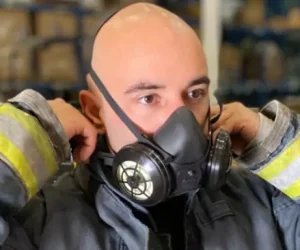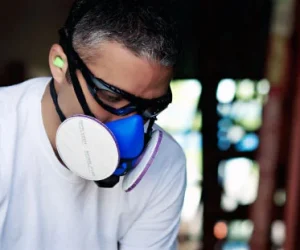Winter is coming, and staying warm should be at the top of your safety list. Whether you’re facing frigid temperatures on a job site, gearing up for a winter sports adventure, or simply trying to stay warm during your daily commute, hand and toe warmers can be a lifesaver.
In this blog post, we’ll be answering the most frequently asked question about hand warmers. From how they work to their environmental impact, we’ll uncover everything you need to know and ensure you’re well-prepared for the winter season.

- How do Hand Warmers Work?
Hand warmers are small, portable devices designed to provide heat to your hands (or other body parts) during cold weather. The magic behind hand warmers lies in a simple yet effective chemical reaction. Inside the hand warmer pouch, there are various ingredients, including iron powder, salt, activated carbon, and vermiculite. When exposed to oxygen in the air, the iron powder undergoes oxidization, producing heat as a byproduct. The heat warms up the surrounding area, including your hands, providing quick and much-needed relief from the cold. - What Are Hand Warmers Made Of?
The specific ingredients in hand warmers can vary between brands and types. Here at Dentec, we carry the HOTTEC® Hand and Toe Warmers, which are made of all-natural ingredients and include iron powder, salt, activated carbon, and vermiculite. These materials are carefully combined to ensure a controlled and consistent heat output. - How Long Do Hand Warmers Last?
Hand warmers are designed to supply heat for a specific duration, typically ranging from 2 to 10 hours, depending on the brand and type. For example, the HOTTEC® Hand Warmers provide up to 12 hours of continuous warmth, whereas the Toe Warmers provide up to 6 hours of continuous warmth.
Hand and Toe Warmers do have an expiration date which is usually printed on the packaging. This date is essential because the chemical reaction that generates heat can degrade over time, reducing the effectiveness of the warmers. While expired hand warmers may still produce some heat, it’s best to use them within their recommended shelf life to ensure optimal performance. - Are Hand Warmers Safe for the Environment?
Hand warmers are generally considered safe for the environment when used as directed. The chemical reaction that generates the heat in hand warmers produces non-toxic byproducts. However, it is essential to dispose of used hand warmers properly. Many manufacturers of hand warmers, including us here at Dentec, recommend throwing your used hand warmers in the trash, as they may contain residual iron and other materials. Do not attempt to open or dismantle used hand warmers, as the contents can be messy. - Are Hand Warmers Toxic/Dangerous/Flammable?
Hand warmers are designed with safety in mind and are not inherently toxic, dangerous, or flammable when used as directed. The ingredients inside of hand warmers are carefully chosen to produce heat without posing a significant risk to users. However, it is crucial to follow the manufacturer’s instructions and avoid puncturing or cutting open hand warmers, as this can release the contents and potentially cause skin irritation.


6. Can Hand Warmers Get Wet?
Most hand warmers are not designed to get wet, as moisture can interfere with the chemical reaction that generates heat. However, some hand warmers are designed to be water-resistant and can withstand a certain level of moisture. Always check the product’s instructions and specifications to determine if it can be used in wet conditions. The HOTTEC® Hand and Toe Warmers® are not intended for use in wet environments.
7. Can You Bring Hand Warmers on a Plane?
Yes, you can typically bring hand warmers on a plane, as they are considered safe for air travel. However, it is always a good idea to check with your specific airline or review their guidelines regarding the transportation of such items, as rules and regulations may vary depending on the airline or country.
8. Can You Use Expired Hand Warmers?
Using expired hand warmers is not recommended if you want to ensure maximum warmth and effectiveness. As mentioned above, the chemical reaction that generates heat can degrade over time, leading to reduced performance. Expired hand warmers may generate some, it’s best to use fresh, unexpired hand warmers for the best results, especially in extremely cold conditions where reliable warmth is essential.
Hand Warmers Are Essential Personal Protective Equipment (PPE)

Hand and toe warmers are a valuable tool for staying warm during the winter months. Understanding how hand warmers work, what they’re made of, and how to use and dispose of them responsibly is crucial for getting the most out of these handy devices. Whether you’re working outdoors, enjoying winter sports, or simply trying to keep warm, hand warmers should be considered essential PPE in your winter safety program and can be a welcome addition to your cold-weather gear. Stay warm and safe!
Dentec Safety is a leading manufacturer and distributor of safety products in the North America since 2004. Dentec Safety is dedicated to providing the highest quality safety products and solutions delivering enhanced value and comfort. Our expertise from decades of experience in Industrial Safety and our innovative design technologies have solidified us as thought leaders in the field. Protection and comfort are at the core of everything we do at Dentec. As a leading manufacturer of Safety Solutions, it is our mission to help organizations do the right thing, keep their employees safe and exceed Industry Health & Safety Standard.









